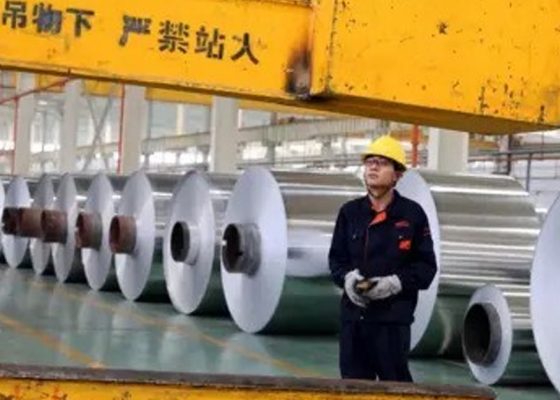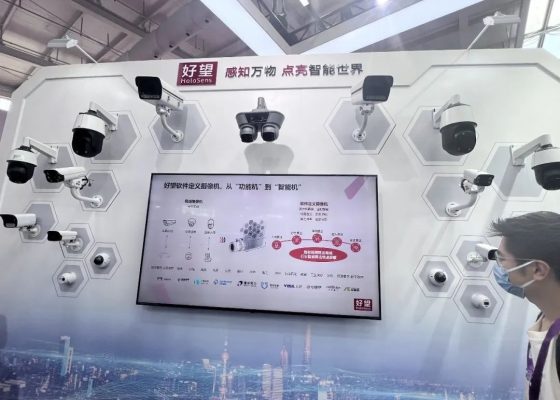By Jessica Li
Rarely do modern people know the elegant crafts made in China centuries ago, before the communist era -1949. The pottery preserved by the German royal family serves as silent evidence of China’s past glory.
In English, China (the country) and china (ceramics), except the country is capitalized. One possible explanation is that when the elegant porcelain-ware from China was first seen in Europe, people cried out in admiration and saw it as representative of the country of its origin.
Pottery can be divided into earthenware and china. Earthenware emerged much earlier than china, and the production processes and raw materials differ between the two.

China is one of the earliest countries in the world to produce and use earthenware. Archaeologists have discovered earthenware dating back to ten thousand years in China. Even then, they were common daily essentials that one could not do without.
Clay is the raw material for earthenware. It is mixed with water and molded into shape. After drying, it is heated between 700-800 degrees Celsius. Some of the earliest earthenware included terracotta, gray pottery, and black pottery. Simple decorative designs were drawn on some of those earlier pieces.
By the Han dynasty (206 BC–220 AD), glazed earthenware appeared. Famous glazed earthenware include Tang tri-color glazed pottery, Jiangsu Boccaro-ware and Shanxi Fahua earthenware.

Tang (618–907AD) tri-color glazed pottery is a type of low temperature glazed earthenware. It is a misconception that only three colors were used. Many colors were used but yellow, brown, and green were the main colors. Tang tri-color glazed potteries were mainly used in burials. They were brittle and easily damaged by water, and thus were not practical for everyday use.
Tang tri-color glazed potteries were mostly made into imitations of people, animals, and everyday tools. People and animal figurines buried with the dead were vividly colored, warriors were muscular, and ladies were graceful. Camel and horse figurines account for the largest number of the animals.
Why camels and horses? It is probably because they were the most valuable animals during those times. They were used for transportation, carried warriors across the battlefield, and helped farmers with soil tillage.
Tang glazed pottery-making reached its peak during the early- and mid-Tang dynasty. Production gradually declined with the weakening of the Tang imperial court. Its technology led the way for the advancement of pottery and porcelain making in later dynasties in China and other regions such as Persia, Arabia, New Rome, and Nara (Japan).
Fahua pottery from the Ming dynasty (1368–1644) is also low-temperature, glazed earthenware that was popular in the southern part of Shanxi. The methods of decorating Fahua pottery came from the Shanxi mural-painting method. A bag filled with clay was used like a piping bag to outline designs, the designs were then filled in with yellow, green and purple colored glaze. The pottery was fired at a low temperature. The Fahua potteries made in Shanxi were mostly small items such as flower vases, incense burners, and animals. Jingdezhen, a pottery center in Jiangxi, also made Fahua pottery around that time. However, it differed from Shanxi Fahua pottery. Jingdezhen used unfired porcelain, whereas Shanxi Fahua used pottery, and the firing temperatures were different. The base colors of the Fahua made at Jingdezhen were yellow and green, whereas Shanxi Fahua used purple and peacock green.

Exquisite and beautiful china represents a peak in the development of China’s pottery. This piece of Song dynasty (960–1279) china might have been a common item in every household, while today it is a priceless treasure. It’s a pity that Chinese people have lost most of their ancestral treasures and craftsmanship.
China, or porcelain, is made by molding china clay into desired shapes, glazed and fired at 1200 Celsius. You can hear a clear metallic sound if you tap a piece of china.
Porcelain was first made by craftsmen in Zhejiang province during the Eastern Han dynasty (25-220AD). Those first china had a blue tint. Black glazed porcelain was also successfully made around that time.
Compared with earthenware, porcelain is sturdier and more pleasing to the eye. Porcelain is far cheaper to make than bronze ware. The raw material could be found almost anywhere in China. Thus, porcelain became popular around that time and was used for everyday household purposes.
In the Wei-Jin (220-420AD) and Nan-Bei Chao (420-589AD) periods, the Yueyao ceramic kiln in Zhejiang province achieved the manufacture of very high-quality china. Its pieces had a signature blue tint.
White glazed china later appeared in northern China. This was the start of the popular phrase in describing Chinese porcelain: “Southern blue and Northern white”.
Along with tea and silk, china was exported to foreign countries through the Silk Road.
China-making flourished in the Song dynasty (960-1279). Dingyao, Yaozhouyao, Junyao, Cizhouayo, Longquanyao, and Jiangxi kiln centers were established. They were the six most famous kiln centers with master craftsmen.
Porcelain-making had been enhanced by the Mongolians who ruled China during the Yuan dynasty (1271-1368). From the Yuan dynasty, Jingdezhen became the porcelain-making center in China. The world-famous “Yuan Qinghua”, which literally means “Yuan dynasty flower design porcelain”, was also made during that time.

“Yuan Qinghua” porcelain was mainly made in Jingdezhen, Jiangxi province. Kilns in Zhejiang province and Yunnan province also made it.
“Yuan Qinghua” porcelain was made with a special kind of pigment painted on the surface of the porcelain before glazing; the pieces were fired at a high temperature. The design painted on the porcelain would turn blue. Popular patterns include lotus flowers, peonies, plants and clouds.
Yuan Qinghua porcelain is relatively thicker, heavier and larger in size compared with other types of china. It was commonly seen as large bottles, jars, bowls, and dishes made in Tang or Song style.
Very few pieces of the original Yuan Qinghua porcelain survive, making them quite valuable. The most expensive piece of Yuan Qinghua porcelain, Gui Gu Descending the Mountain, was auctioned off for £14 million in 2005.
The Qing dynasty took over the country in 1644. Porcelains decorated with enamel were signature pieces of this era.
Enamel-decorated porcelains have been used in the imperial court since the Emperor Kangxi (1661-1723) era. “Enamel” was handiwork made from copper, it was brought to China in the 13th century from Arabia. Chinese craftsmen incorporated enamel-making skills into Chinese porcelain. On the inside of enamel-decorated china, there is a layer of white glaze; on the outside, it is painted with flowers in rich colors of yellow, green, red, purple, etc.
China has a long history of pottery-making. Pieces from each era have their own characteristics. So what is your favorite style of pottery?
(The article first published on December 30, 2015)












Cancel anytime


Using our website
You may use the The Middle Land website subject to the Terms and Conditions set out on this page. Visit this page regularly to check the latest Terms and Conditions. Access and use of this site constitutes your acceptance of the Terms and Conditions in-force at the time of use.
Intellectual property
Names, images and logos displayed on this site that identify The Middle Land are the intellectual property of New San Cai Inc. Copying any of this material is not permitted without prior written approval from the owner of the relevant intellectual property rights.
Requests for such approval should be directed to the competition committee.
Please provide details of your intended use of the relevant material and include your contact details including name, address, telephone number, fax number and email.
Linking policy
You do not have to ask permission to link directly to pages hosted on this website. However, we do not permit our pages to be loaded directly into frames on your website. Our pages must load into the user’s entire window.
The Middle Land is not responsible for the contents or reliability of any site to which it is hyperlinked and does not necessarily endorse the views expressed within them. Linking to or from this site should not be taken as endorsement of any kind. We cannot guarantee that these links will work all the time and have no control over the availability of the linked pages.
Submissions
All information, data, text, graphics or any other materials whatsoever uploaded or transmitted by you is your sole responsibility. This means that you are entirely responsible for all content you upload, post, email or otherwise transmit to the The Middle Land website.
Virus protection
We make every effort to check and test material at all stages of production. It is always recommended to run an anti-virus program on all material downloaded from the Internet. We cannot accept any responsibility for any loss, disruption or damage to your data or computer system, which may occur while using material derived from this website.
Disclaimer
The website is provided ‘as is’, without any representation or endorsement made, and without warranty of any kind whether express or implied.
Your use of any information or materials on this website is entirely at your own risk, for which we shall not be liable. It is your responsibility to ensure any products, services or information available through this website meet your specific requirements.
We do not warrant the operation of this site will be uninterrupted or error free, that defects will be corrected, or that this site or the server that makes it available are free of viruses or represent the full functionality, accuracy and reliability of the materials. In no event will we be liable for any loss or damage including, without limitation, loss of profits, indirect or consequential loss or damage, or any loss or damages whatsoever arising from the use, or loss of data, arising out of – or in connection with – the use of this website.
Last Updated: September 11, 2024
New San Cai Inc. (hereinafter “The Middle Land,” “we,” “us,” or “our”) owns and operates www.themiddleland.com, its affiliated websites and applications (our “Sites”), and provides related products, services, newsletters, and other offerings (together with the Sites, our “Services”) to art lovers and visitors around the world.
This Privacy Policy (the “Policy”) is intended to provide you with information on how we collect, use, and share your personal data. We process personal data from visitors of our Sites, users of our Services, readers or bloggers (collectively, “you” or “your”). Personal data is any information about you. This Policy also describes your choices regarding use, access, and correction of your personal information.
If after reading this Policy you have additional questions or would like further information, please email at middleland@protonmail.com.
PERSONAL DATA WE COLLECT AND HOW WE USE IT
We collect and process personal data only for lawful reasons, such as our legitimate business interests, your consent, or to fulfill our legal or contractual obligations.
Information You Provide to Us
Most of the information Join Talents collects is provided by you voluntarily while using our Services. We do not request highly sensitive data, such as health or medical information, racial or ethnic origin, political opinions, religious or philosophical beliefs, trade union membership, etc. and we ask that you refrain from sending us any such information.
Here are the types of personal data that you voluntarily provide to us:
As a registered users or customers, you may ask us to review or retrieve emails sent to your business. We will access these emails to provide these services for you.
We use the personal data you provide to us for the following business purposes:
Information Obtained from Third-Party Sources
We collect and publish biographical and other information about users, which we use to promote the articles and our bloggers who use our sites. If you provide personal information about others, or if others give us your information, we will only use that information for the specific reason for which it was provided.
Information We Collect by Automated Means
Log Files
The site uses your IP address to help diagnose server problems, and to administer our website. We use your IP addresses to analyze trends and gather broad demographic information for aggregate use.
Every time you access our Site, some data is temporarily stored and processed in a log file, such as your IP addresses, the browser types, the operating systems, the recalled page, or the date and time of the recall. This data is only evaluated for statistical purposes, such as to help us diagnose problems with our servers, to administer our sites, or to improve our Services.
Do Not Track
Your browser or device may include “Do Not Track” functionality. Our information collection and disclosure practices, and the choices that we provide to customers, will continue to operate as described in this Privacy Policy, whether or not a “Do Not Track” signal is received.
HOW WE SHARE YOUR INFORMATION
We may share your personal data with third parties only in the ways that are described in this Privacy Policy. We do not sell, rent, or lease your personal data to third parties, and We does not transfer your personal data to third parties for their direct marketing purposes.
We may share your personal data with third parties as follows:
There may be other instances where we share your personal data with third parties based on your consent.
HOW WE STORE AND SECURE YOUR INFORMATION
We retain your information for as long as your account is active or as needed to provide you Services. If you wish to cancel your account, please contact us middleland@protonmail.com. We will retain and use your personal data as necessary to comply with legal obligations, resolve disputes, and enforce our agreements.
All you and our data are stored in the server in the United States, we do not sales or transfer your personal data to the third party. All information you provide is stored on a secure server, and we generally accepted industry standards to protect the personal data we process both during transmission and once received.
YOUR RIGHTS/OPT OUT
You may correct, update, amend, delete/remove, or deactivate your account and personal data by making the change on your Blog on www.themiddleland.com or by emailing middleland@protonmail.com. We will respond to your request within a reasonable timeframe.
You may choose to stop receiving Join Talents newsletters or marketing emails at any time by following the unsubscribe instructions included in those communications, or you can email us at middleland@protonmail.com
LINKS TO OTHER WEBSITES
The Middle Land include links to other websites whose privacy practices may differ from that of ours. If you submit personal data to any of those sites, your information is governed by their privacy statements. We encourage you to carefully read the Privacy Policy of any website you visit.
NOTE TO PARENTS OR GUARDIANS
Our Services are not intended for use by children, and we do not knowingly or intentionally solicit data from or market to children under the age of 18. We reserve the right to delete the child’s information and the child’s registration on the Sites.
PRIVACY POLICY CHANGES
We may update this Privacy Policy to reflect changes to our personal data processing practices. If any material changes are made, we will notify you on the Sites prior to the change becoming effective. You are encouraged to periodically review this Policy.
HOW TO CONTACT US
If you have any questions about our Privacy Policy, please email middleland@protonmail.com
The Michelin brothers created the guide, which included information like maps, car mechanics listings, hotels and petrol stations across France to spur demand.
The guide began to award stars to fine dining restaurants in 1926.
At first, they offered just one star, the concept was expanded in 1931 to include one, two and three stars. One star establishments represent a “very good restaurant in its category”. Two honour “excellent cooking, worth a detour” and three reward “exceptional cuisine, worth a
You must be logged in to post a comment.
Thank you for your participation,
please Log in or Sign up to Vote

123Sign in to your account
2 Responses